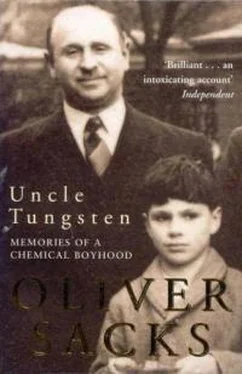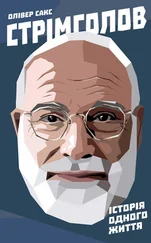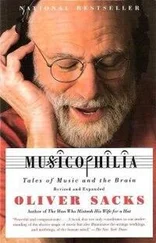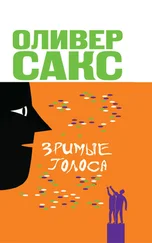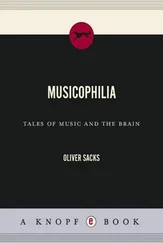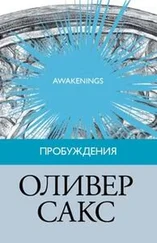Even though the rest of the scientific community had ignored the news of Becquerel’s rays, the Curies were galvanized by it: this was a phenomenon without precedent or parallel, the revelation of a new, mysterious source of energy; and nobody, apparently, was paying any attention to it. They wondered at once whether there were any substances besides uranium that emitted similar rays, and started on a systematic search (not confined, as Becquerel’s had been, to fluorescent substances) of everything they could lay their hands on, including samples of almost all the seventy known elements in some form or other. They found only one other substance besides uranium that emitted Becquerel’s rays, another element of very high atomic weight – thorium. Testing a variety of pure uranium and thorium salts, they found the intensity of the radioactivity seemed to be related only to the amount of uranium or thorium present; thus one gram of metallic uranium or thorium was more radioactive than one gram of any of their compounds.
But when they extended their survey to some of the common minerals containing uranium and thorium, they found a curious anomaly, for some of these were actually more active than the element itself. Samples of pitchblende, for instance, might be up to four times as radioactive as pure uranium. Could this mean, they wondered, in an inspired leap, that another, as-yet-unknown element was also present in small amounts, one that was far more radioactive than uranium itself?
In 1897 the Curies launched upon an elaborate chemical analysis of pitchblende, separating the many elements it contained into analytic groups: salts of alkali metals, of alkaline earth elements, of rare-earth elements – groups basically similar to those of the periodic table – to see if the unknown radioactive element had chemical affinities with any of them. Soon it became clear that a good part of the radioactivity could be concentrated by precipitation with bismuth.
They continued rendering their pitchblende residue down, and in July of 1898 they were able to make a bismuth extract four hundred times more radioactive than uranium itself. Knowing that spectroscopy could be thousands of times more sensitive than traditional chemical analysis, they now approached the eminent rare-earth spectroscopist Eugene Demarcay to see if they could get a spectroscopic confirmation of their new element. Disappointingly, no new spectral signature could be obtained at this point; but nonetheless, the Curies wrote,
… we believe the substance we have extracted from pitchblende contains a metal not yet observed, related to bismuth by its analytical properties. If the existence of this new metal is confirmed we propose to call it polonium, from the name of the original country of one of us.
They were convinced, moreover, that there must be still another radioactive element waiting to be discovered, for the bismuth extraction of polonium accounted for only a portion of the pitchblende’s radioactivity.
They were unhurried – no one else, after all, it seemed, was even interested in the phenomenon of radioactivity, apart from their good friend Becquerel – and at this point took off on a leisurely summer holiday. (They were unaware at the time that there was another eager and intense observer of Becquerel’s rays, the brilliant young New Zealander Ernest Rutherford, who had come to work in J.J. Thomson’s lab in Cambridge.) In September the Curies returned to the chase, concentrating on precipitation with barium – this seemed particularly effective in mopping up the remaining radioactivity, presumably because it had close chemical affinities with the second as-yet-unknown element they were now seeking. Things moved swiftly, and within six weeks they had a bismuth-free (and presumably polonium-free) barium chloride solution which was nearly a thousand times as radioactive as uranium. Demarcay’s help was sought once again, and this time, to their joy, he found a spectral line (and later several lines: ‘two beautiful red bands, one line in the blue-green, and two faint lines in the violet’) belonging to no known element. Emboldened by this, the Curies claimed a second new element a few days before the close of 1898. They decided to call it radium, and since there was only a trace of it mixed in with the barium, they felt its radioactivity ‘must therefore be enormous.’
It was easy to claim a new element: there had been more than two hundred such claims in the course of the nineteenth century, most of which turned out to be cases of mistaken identity, either ‘discoveries’ of already known elements or mixtures of elements. Now, in a single year, the Curies had claimed the existence of not one but two new elements, solely on the basis of a heightened radioactivity and its material association with bismuth and barium (and, in the case of radium, a single new spectral line). Yet neither of their new elements had been isolated, even in microscopic amounts.
Pierre Curie was fundamentally a physicist and theorist (though dexterous and ingenious in the lab, often devising new and original apparatus – one such was an electrometer, another a delicate balance based on a new piezo-electric principle – both subsequently used in their radioactivity studies). For him, the incredible phenomenon of radioactivity was enough – it invited a vast new realm of research, a new continent where countless new ideas could be tested.
But for Marie, the emphasis was different: she was clearly enchanted by the physicality of radium as well as its strange new powers; she wanted to see it, to feel it, to put it in chemical combination, to find its atomic weight and its position in the periodic table.
Up to this point the Curies’ work had been essentially chemical, removing calcium, lead, silicon, aluminium, iron, and a dozen rare-earth elements – all the elements other than barium – from the pitchblende. Finally, after a year of this, there came a time when chemical methods alone no longer sufficed. There seemed no chemical way of separating radium from barium, so Marie Curie now began to look for a physical difference between their compounds. It seemed probable that radium would be an alkaline earth element like barium and might therefore follow the trends of the group. Calcium chloride is highly soluble; strontium chloride less so; barium chloride still less so – radium chloride, Marie Curie predicted, would be virtually insoluble. Perhaps one could make use of this to separate the chlorides of barium and radium, using the technique of fractional crystallization. As a warm solution is cooled, the less soluble solute will crystallize out first, and this was a technique which had been pioneered by the rare-earth chemists, striving to separate elements that were chemically almost indistinguishable. It was one that required great patience, for hundreds, even thousands, of fractional crystallizations might be needed, and it was this repetitive and tantalizingly slow process that now caused the months to extend into years.
The Curies had hoped they might isolate radium by 1900, but it was to take nearly four years from the time they announced its probable existence to obtain a pure radium salt, a decigram of radium chloride – less than a ten-millionth part of the original. Fighting against all manner of physical difficulties, fighting the doubts and skepticisms of most of their peers, and sometimes their own hopelessness and exhaustion; fighting (although they did not know it) against the insidious effects of radioactivity on their own bodies, the Curies finally triumphed and obtained a few grains of pure white crystalline radium chloride – enough to calculate radium’s atomic weight (226), and to give it its rightful place, below barium, in the periodic table.
To obtain a decigram of an element from several tons of ore was an achievement with no precedent; never had an element been so hard to obtain. Chemistry alone could not have succeeded in this, nor could spectroscopy alone, for the ore had to be concentrated a thousandfold before the first faint spectral lines of radium could even be seen. It had required a wholly new approach – the use of radioactivity itself – to identify the infinitesimal concentration of radium in its vast mass of surrounding material, and to monitor it as it was slowly, reluctantly, forced into a state of purity.
Читать дальше
